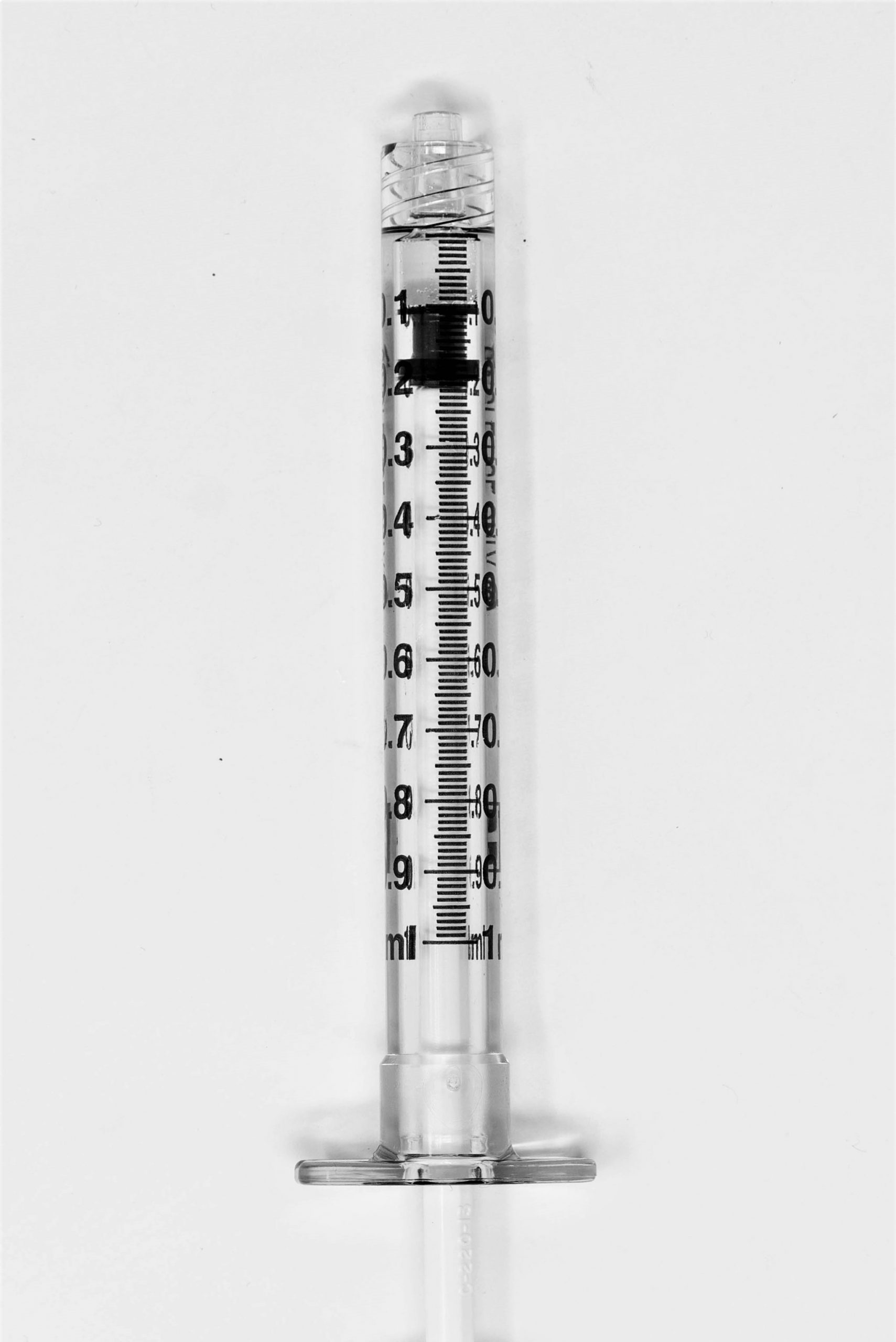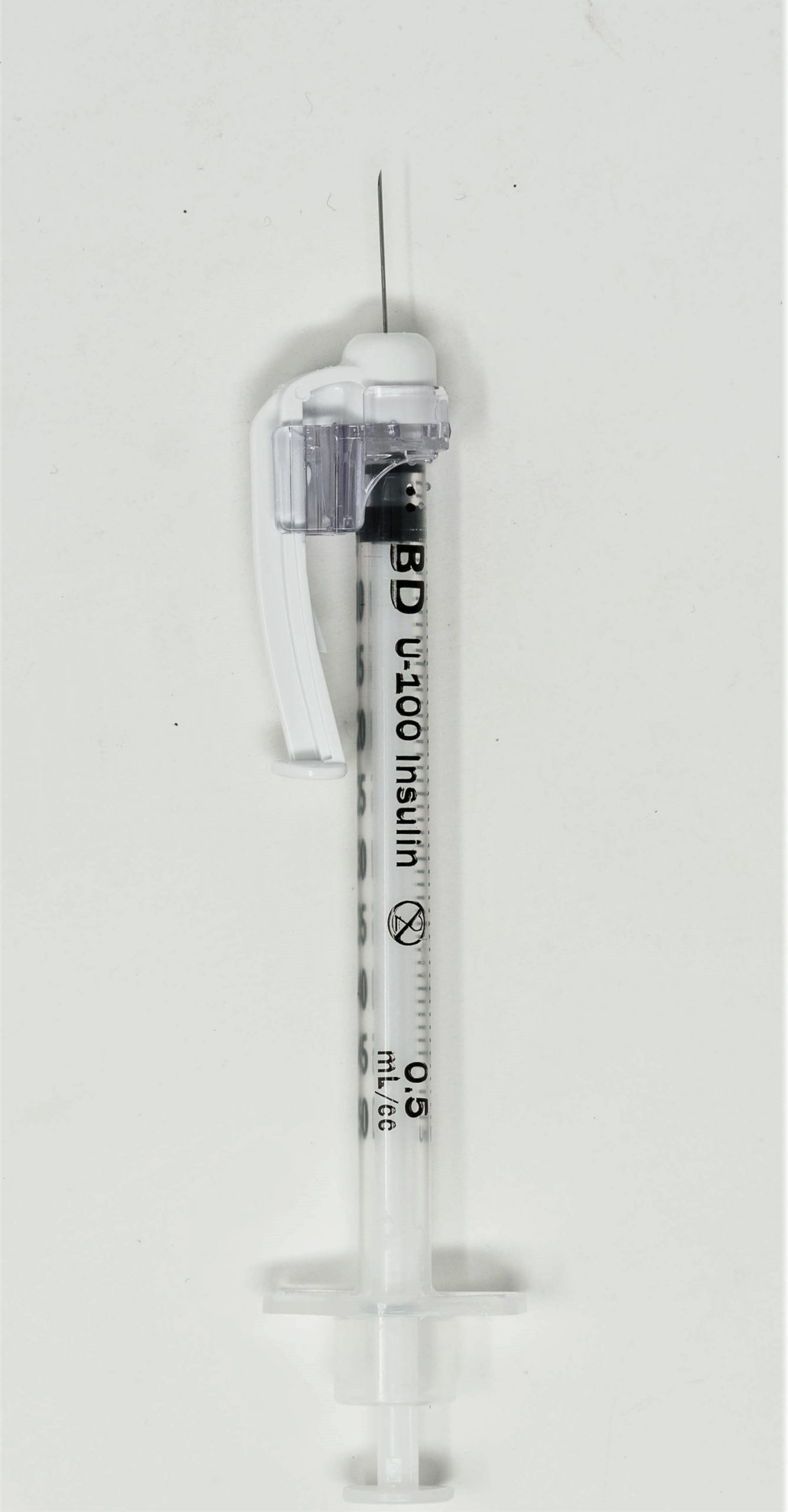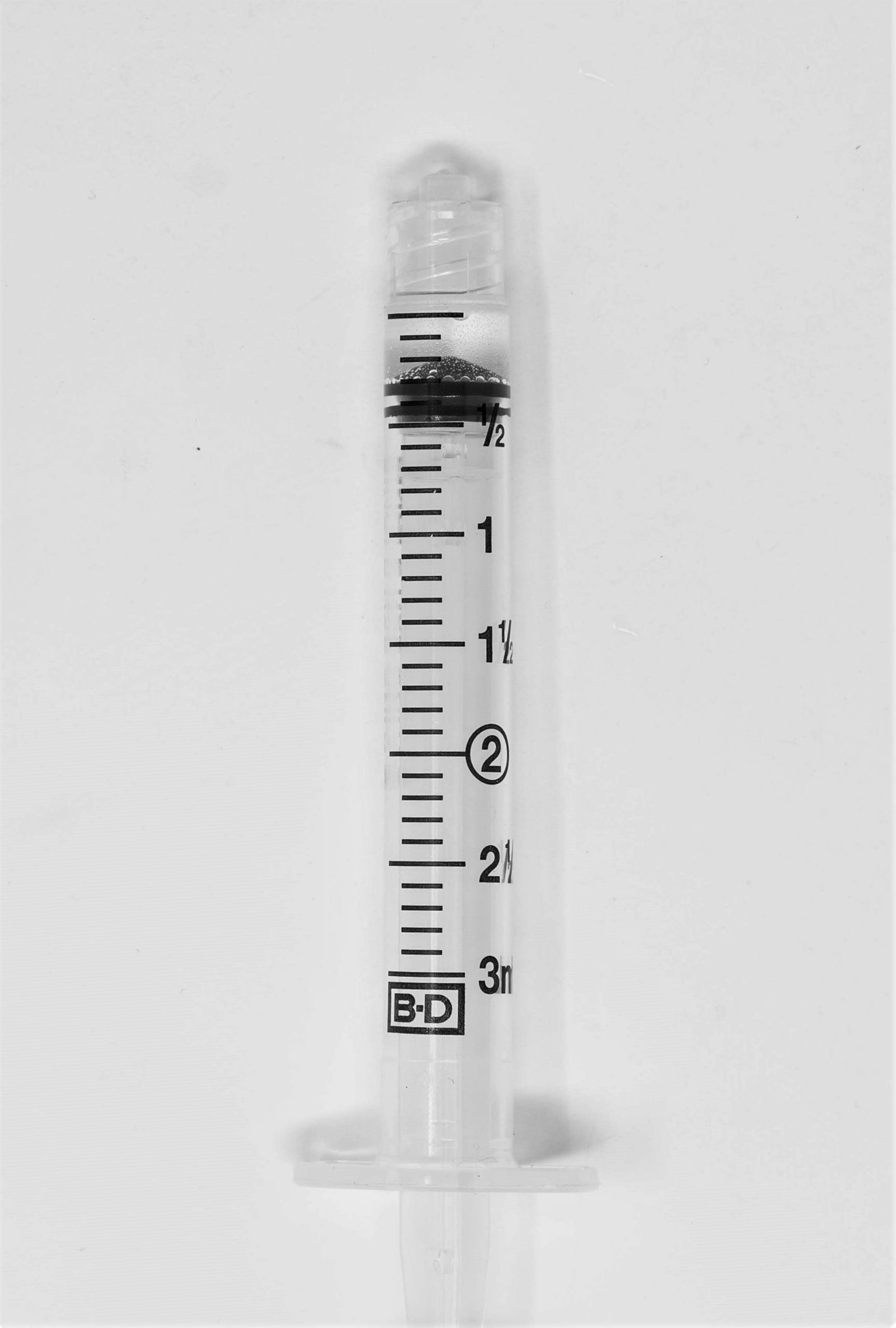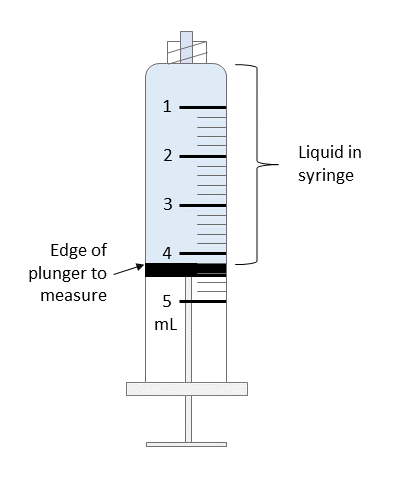Measuring
11 Reading Syringes
Lesson
Learning Outcomes
By the end of this chapter, learners will be able to:
- identify the volume of liquid in a syringe, and
- select the most appropriate syringe to draw up a volume of liquid.
Syringe Units of Measure
Syringes come in a variety of sizes and are most often labelled for measurement in millilitres (mL) of liquid. It is possible you may see some syringes measuring cubic centimeters (cm3), but most large companies use only mL. 1 cm3 is equivalent to 1 mL. Insulin syringes, used only in drawing up insulin, measure units of insulin — not millilitres of insulin. Less commonly, you will see some syringes packaged with particular medications labelled in imperial units, such as teaspoons or tablespoons. For instance, a liquid antibiotic for pediatric patients may be packaged with a syringe measuring teaspoons of liquid.
Three samples of syringes with difference measurements are included below:



Reading Syringe Volumes
Attention to detail is required to read syringe volumes accurately.
- Identify the unit of measure for the syringe you are using.
- The barrel of the syringe is marked with graduated measurements of a particular unit of measure. Long or possibly bold lines mark whole units, with whole numbers often marked on the syringe barrel.
- Identify the size of graduated measurements.
- Depending on the total capacity of the syringe, the space between each line on syringes will vary in volume. For instance, in a 3 mL syringe, each space between lines is equal to 0.1 mL. In a 5 mL syringe, each space is equal to 0.2 mL.
- Identify where the end of the plunger is.
- The liquid inside the syringe will take up space up to the edge of the plunger inside the syringe. This edge is what should be compared to the graduated measurements to determine how much liquid is inside the syringe. The plunger inside the syringe is large and usually shows two sharp edges where the rubber is touching the inside of the syringe barrel. The edge you are looking at is always going to be the edge closed to the tip of the syringe, not the edge close to where your fingers are holding the flanges and plunger rod.
- Determine if the volume is accurate.
- If bubbles are present, the measurement of volume will not be accurate. Remove the bubbles before reading the volume of liquid.
- Determine the volume of liquid present.
- Now you are ready to read the volume of liquid in the syringe. Compare the edge of the plunger to the graduated markings to determine how much liquid is in the syringe.
Sample Exercise 11.1
Use the image below to answer the questions and click on “Answers” to check your work.

Questions:
- What is the capacity of the syringe?
- How much volume is between each graduated measure on the syringe?
- Identify the volume of liquid in the pictured syringe.
Answers:
- 5 mL
The capacity is the total volume the syringe can measure. This is represented by the largest number on the scale, and will be closest to the flange of the syringe. - 0.2 mL
On this scale, 1 mL is broken up into 5 parts. [latex]\dfrac{1}{5}=\text{0.2 mL}[/latex] - 4.2 mL
Make sure to take the measurement from the side of the plunger closest to the syringe tip. You can see liquid represented by the shaded portion from this plunger edge to the tip of the syringe.
Choosing Syringe Sizes
There are multiple syringes which can measure 1 mL of liquid. You will use critical thinking to determine which is the most appropriate syringe to use when drawing up medication. Factors you can consider when choosing a syringe include, but are not limited to:
- Policy requirements.
- Be aware of policy requirements related to equipment you are using. In particular situations you will need to select a specific size of syringe.
- The total volume of liquid required.
- You should use a syringe which can draw up the total amount of liquid required whenever possible. Choose a syringe which can hold all of the volume of liquid required.
- The precision required for the context of the situation.
- There are a variety of factors which impact how precise you must be when measuring liquid medications. For instance, the effect of medications on a premature infant versus an adult patient can be much more pronounced, and thus require a smaller syringe allowing measurements of volume to additional decimal places.
- The pressure which will be created when delivering the liquid.
- In general, smaller syringes created higher pressure than larger syringes when liquid is delivered from the syringe. Pressure may or may not be a factor which needs to be considered in the particular situation you are working in.
- The supply available.
- What is available for use at the time you are drawing up liquid? If the syringe you were going to choose is not available, you will need to determine if it is safe to replace with an alternate syringe type.
Key Takeaways
When determining the volume of liquid in a syringe, keep the following in mind:
- Note the unit of measure of the syringe.
- Ensure you are measuring from the correct side of the plunger.
- Remove all bubbles before determining the volume.
Practice Set 11.1: Reading Syringe Volumes
Practice Set 11.1: Reading syringe volumes
Practice Set 11.2: Reading Syringe Volumes
Practice Set 11.2: Reading syringe volumes
Practice Set 11.3: Reading Syringe Volumes
Practice Set 11.3: Reading Syringe Volumes
Practice Set 11.4: Reading Syringe Volumes
Practice Set 11.4: Reading Syringe Volumes
Practice Set 11.5: Choosing Syringes
Practice Set 11.5: Choosing Syringes
Identify the type of syringe you would select to draw up the following volumes of liquid medication.
- 4.2 mL
- 0.22 mL
- 1.6 mL
- 0.75 mL
- 3.0 mL
- 0.1 mL
- 2.6 mL
- 1 mL
- 2.3 mL
- 7.8 mL
Answers:
- 5 mL syringe
- 1 mL syringe
- 3 mL syringe (5 mL is also possible)
- 1 mL syringe
- 3 mL or 5 mL syringe
- 1 mL syringe
- 3 mL or 5 mL syringe
- 3 mL syringe. (1 mL also works, but can be tricky to clear air bubbles as the plunger is pulled almost all the way back.)
- 3 mL syringe (a 5 mL syringe has measurements in 0.2 mL increments so is not the best choice as odd measurements fall midway between the measurement lines)
- 10 mL syringe

